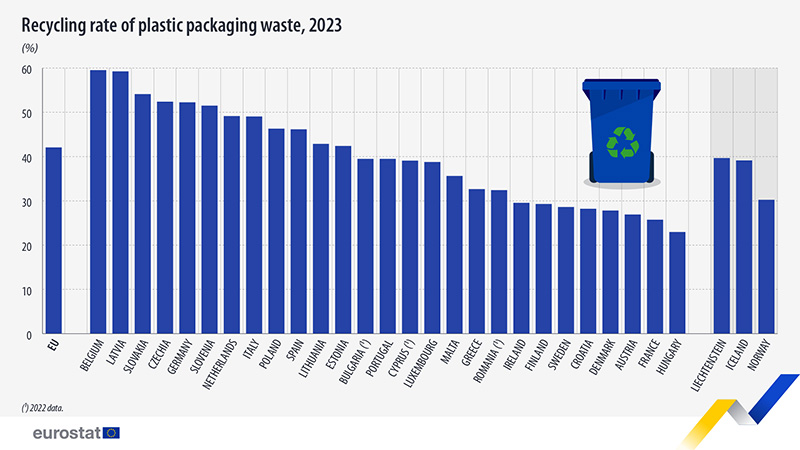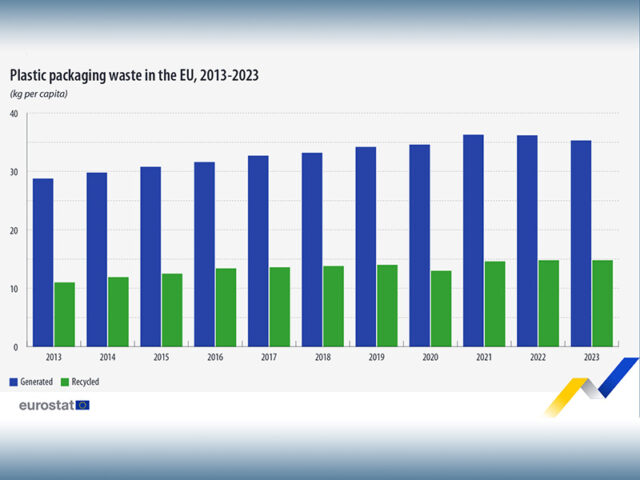Plastic packaging waste remains a major environmental concern across the European Union, according to the latest Eurostat data published this week. In 2023, the EU generated 79.7 million tonnes of packaging waste — the equivalent of 177.8 kg per person. Although this represents a decrease of 8.7 kg per capita compared with 2022, it is still 21.2 kg higher than a decade ago.
Paper and cardboard accounted for the largest share of packaging waste (40.4%), followed by plastics (19.8%), glass (18.8%), wood (15.8%) and metals (4.9%).
Each EU resident generated an average of 35.3 kg of plastic packaging waste, of which 14.8 kg was recycled. While this marks a slight year-on-year improvement — a 1.0 kg reduction in generated plastic waste and a 0.1 kg increase in recycled amounts — the long-term trend remains upward. Between 2013 and 2023, plastic packaging waste per capita rose by 6.4 kg, while recycling increased by 3.8 kg.
The EU’s overall plastic packaging recycling rate reached 42.1% in 2023, up from 38.2% in 2013. Belgium achieved the highest national rate at 59.5%, followed closely by Latvia (59.2%) and Slovakia (54.1%). At the other end of the spectrum, Hungary (23.0%), France (25.7%), and Austria (26.9%) recorded the lowest recycling rates.

Eurostat noted that methodological changes introduced in 2020 — including a harmonised calculation point for recycling and stricter accounting for composite packaging materials — caused a temporary 3.4% decline in reported recycling rates across the EU that year.
The data cover packaging waste generated by all sectors — households, businesses, and public institutions — and are calculated per capita using each country’s average population.











